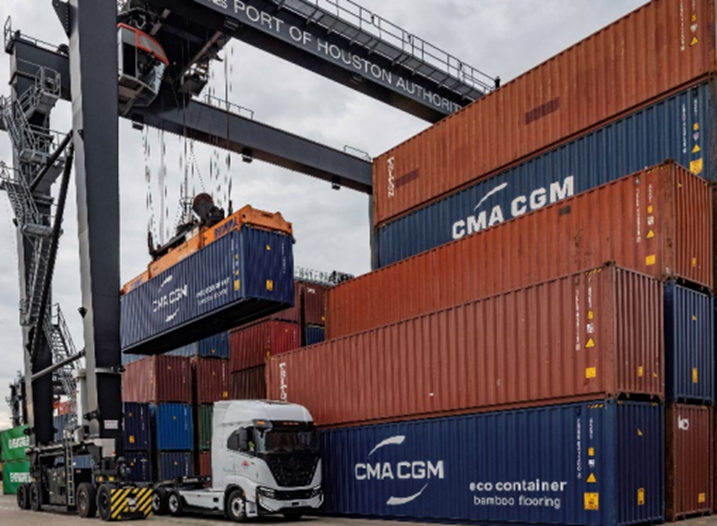How Texas cities can create a cleaner transportation system and healthier communities
by Maia Draper & Phillip Martin
Transportation accounts for 24% of greenhouse gas emissions in Texas. Throughout the state, areas with the greatest concentration of traffic are often found to be in nonattainment — a designation from the Environmental Protection Agency that pollution levels exceed air quality standards. Texas’ cities can engage in transportation and environmental planning that reduces pollution and improves health outcomes for communities around the state.
In the U.S., Metropolitan Planning Organizations play a significant role in managing and shaping regional transportation systems in major urban areas. In addition to serving as conduits of federal transportation funding to local governments and regional agencies, MPOs are also responsible for assessing the air quality and environmental impacts of proposed investments and policies. Historically, this process has involved quantifying the emissions associated with transportation projects to ensure that new investments comply with the federal Clean Air Act.
How Texas cities can create a cleaner transportation system and healthier communities Share on XWithin the last decade, there has been growing interest — from federal, state and regional stakeholders — in incorporating a broader range of transportation impacts into the planning and project selection process, including climate, public health, social equity and environmental justice. Many MPOs have developed screening tools and evaluation processes to integrate these policy concerns into planning efforts.
Developing effective policy metrics to evaluate and track these goals has become increasingly crucial for MPOs and the metro areas they serve with the rollout of the Biden administration’s Infrastructure Investment and Jobs Act, which allocated more than $200 billion for transportation projects and prioritizes projects that reduce climate emissions, promote climate resiliency and reduce historic inequities. In this context, MPOs have an unprecedented opportunity to address and redress longstanding impacts to overburdened communities and a critical responsibility to get it right.
For example, Texas will receive $407 million over five years from the National Electric Vehicle Infrastructure program, to build electric vehicle charging stations throughout the state. The initial phase of the program focuses on building at least one charging station with a minimum of four charging connectors every 50 miles along almost all of Texas’ interstate highways. The second phase will include hundreds of locations across the state, including at least one in each of Texas’ 254 counties, with almost two dozen MPOs managing the funds and making decisions on how, where and what kind of charging is built in their respective regions.
Importantly, the second phase of NEVI will fund charging stations for heavy-duty trucks and buses, in addition to traditional charging stations for electric cars. Data shows that electrifying a single Class-8 heavy-duty truck provides the equivalent pollution reduction of electrifying 100 passenger cars. Cities across Texas will need to weigh the benefits of building charging stations in underserved, heavily polluted neighborhoods that may not currently have EV charging options with building out public heavy-duty charging stations that can serve the dirtiest vehicles on the road.
Fortunately, there are several high-quality tools that city officials and transportation planners can utilize to make that decision, for NEVI or any other transportation planning efforts. Several nationwide mapping tools have been developed by federal government agencies — such as EPA’s EJScreen, the CDC’s Social Vulnerability Index or the White House Council of Environmental Quality’s Climate and Economic Justice Screening Tool . In addition to these tools, EDF has developed the Climate Vulnerability Index , which allows policymakers to better identify which communities face the greatest challenges from current environmental stressors such as air pollution, alongside an array of factors affecting community health in a changing climate. The CVI also shows what is driving the challenges so policymakers and communities can act to build climate resilience where needed most.
To support transportation planning focused on programs like NEVI, EDF has worked with the Texas Transportation Institute to create specialized screening dashboards for MPOs to benchmark performance at the census tract level on key indicators such as equity, climate resilience and carbon reduction goals. Transportation planners can use the CVI or similar tools to better identify disadvantaged, overburdened communities in their region and incorporate this information in project design and selection. Conducting this process at the outset gives MPOs the opportunity to ensure that new infrastructure contributes to building a healthier, more equitable and more resilient transportation system.
For example, TexArkana MPO used the CVI as part of a funding application to rehabilitate a major transportation corridor. Policymakers were able to benchmark transportation infrastructure vulnerabilities, identify census tracts most in need of improvements and design project features to address critical issues including those affecting local air quality, mobility, safety and quality of life in that area. Similarly in El Paso, the local MPO used the CVI to identify a location near a U.S.-Mexico border crossing and freight railroad where air monitoring was needed, due to a high volume of heavy-duty vehicle traffic.
EDF is working with these and other metro areas across the state to ensure officials are aware of the tools and technology available. We serve on Clean Cities committees and working groups in Houston, Dallas, San Antonio and Austin, maintain partnerships with Port Houston and several state agencies, and are prepared to brief any city on what is possible for air quality planning.
The influx of new federal transportation funding taking shape in Texas provides a tremendous opportunity for transportation planners across the state. By using new tools to evaluate and incorporate considerations of equity, environmental impacts and climate resilience in key transportation infrastructure decisions policymakers have a once in a generation opportunity to improve air quality in Texas and build a healthier, more equitable more resilient transportation system.











